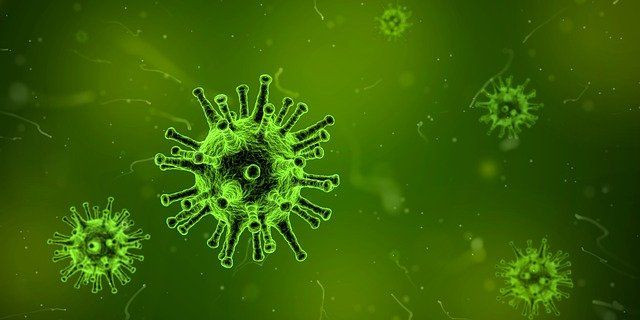SHFV: Another Monkey Virus 'Poised For Spillover To Humans'; How Dangerous Is It?
KEY POINTS
- The virus is called simian hemorrhagic fever virus (SHFV)
- It is a type of simian arterivirus known to cause ebola-like illness
- Just like HIV, SHFV appears to target immune cells
Close on the heels of the SAR-COV-2 pandemic, scientists have identified a fatal virus source that could start another pandemic and might already be present in the current human population. According to the researchers, it is "poised for spillover to humans."
The virus called simian hemorrhagic fever virus (SHFV) has a simian origin and patas monkeys are believed to be its natural host reservoir, according to the study published in the journal Cell. It is a type of simian arterivirus known to cause ebola-like illness when they cross over to other primate species.
There are haunting similarities between SHFV and HIV. HIV, like SHFV, had a simian origin in the form of a simian immunodeficiency virus (SIV). Just like HIV, SHFV appears to target immune cells.
"The similarities are profound between this virus and the simian viruses that gave rise to the HIV pandemic," lead author, Cody Warren, an assistant professor in the College of Veterinary Medicine at The Ohio State University, said.
By now, the world has realized and witnessed the effects of a pandemic due to a zoonotic disease. Humans have previously had close brushes with the viruses, including Middle Eastern Respiratory Syndrome (MERS) in 2012, Severe Acute Respiratory Syndrome coronavirus (SARS-CoV) in 2003, and more recently, SARS-COV-2 -- the virus responsible for COVID-19.
However, the authors said there is no cause for alarm as there is no certainty that the ebola-like virus will cause a pandemic. They did guarantee the emergence of a pandemic, not necessarily from SHFV, in the future.
The researchers zeroed in on a receptor called CD163 which allows entry of SHFV into target cells of primates. Remarkably, they found the simian arteriviruses could attach to the human version of CD163, entering into the cells and rapidly making copies of themselves.
This, according to research, points to the relative ease with which the virus can jump to humans. "COVID is just the latest in a long string of spillover events from animals to humans, some of which have erupted into global catastrophes," senior author Sara Sawyer, professor of molecular, cellular, and developmental biology at CU Boulder warned.
"Our hope is that by raising awareness of the viruses that we should be looking out for, we can get ahead of this so that if human infections begin to occur, we're on it quickly," Sawyer added.
The researchers recalled how HIV was unknown until it was reported to kill young men in the United States in the 1980s. The AIDS-causing virus is, however, said to have spillover to humans sometime in the early 1900s.
When the HIV pandemic struck, the medical community was ill-equipped to handle the disease. There were neither serology tests available nor any treatments.
The study authors suggest ramping up studies into simian arteriviruses and designing antibody blood tests for them, while also considering surveillance of human populations likely to have close contact with animal carriers.
"Just because we haven't diagnosed a human arterivirus infection yet doesn't mean that no human has been exposed. We haven't been looking," Warren said.

© Copyright IBTimes 2025. All rights reserved.





















